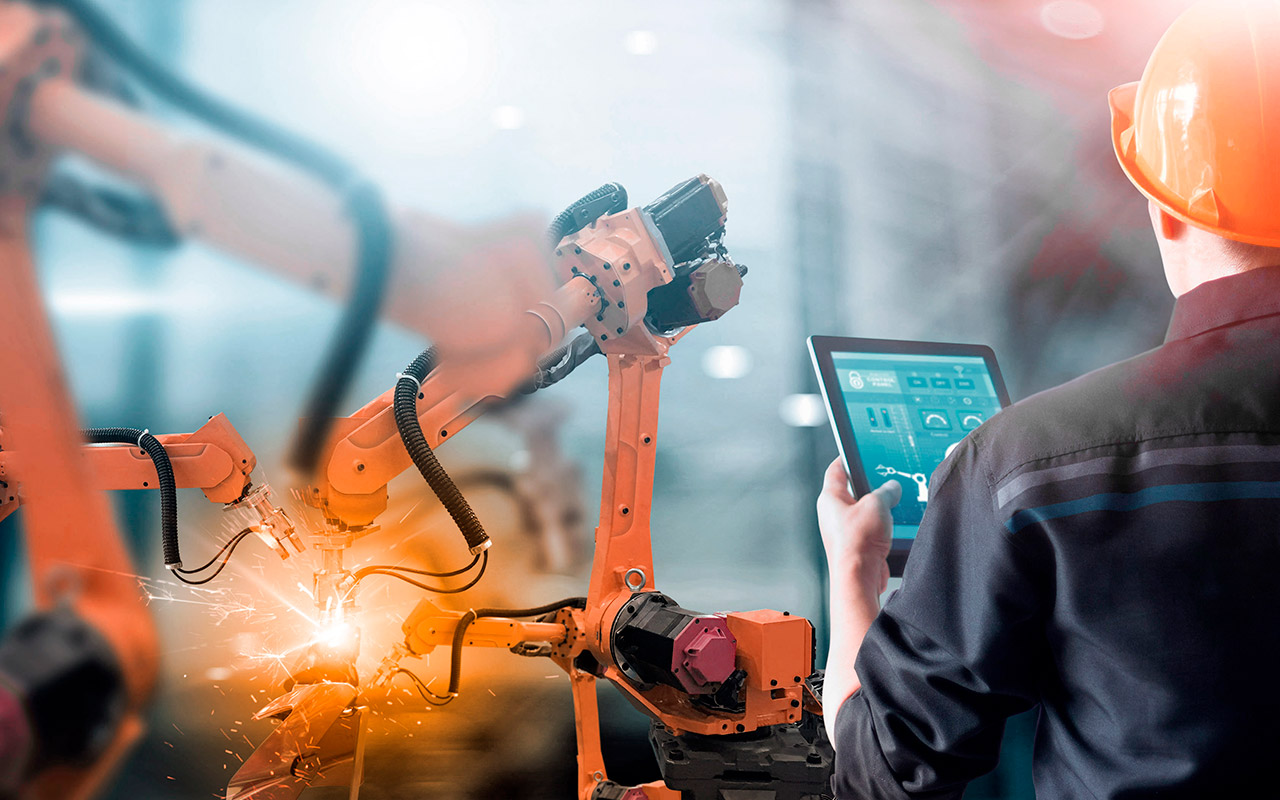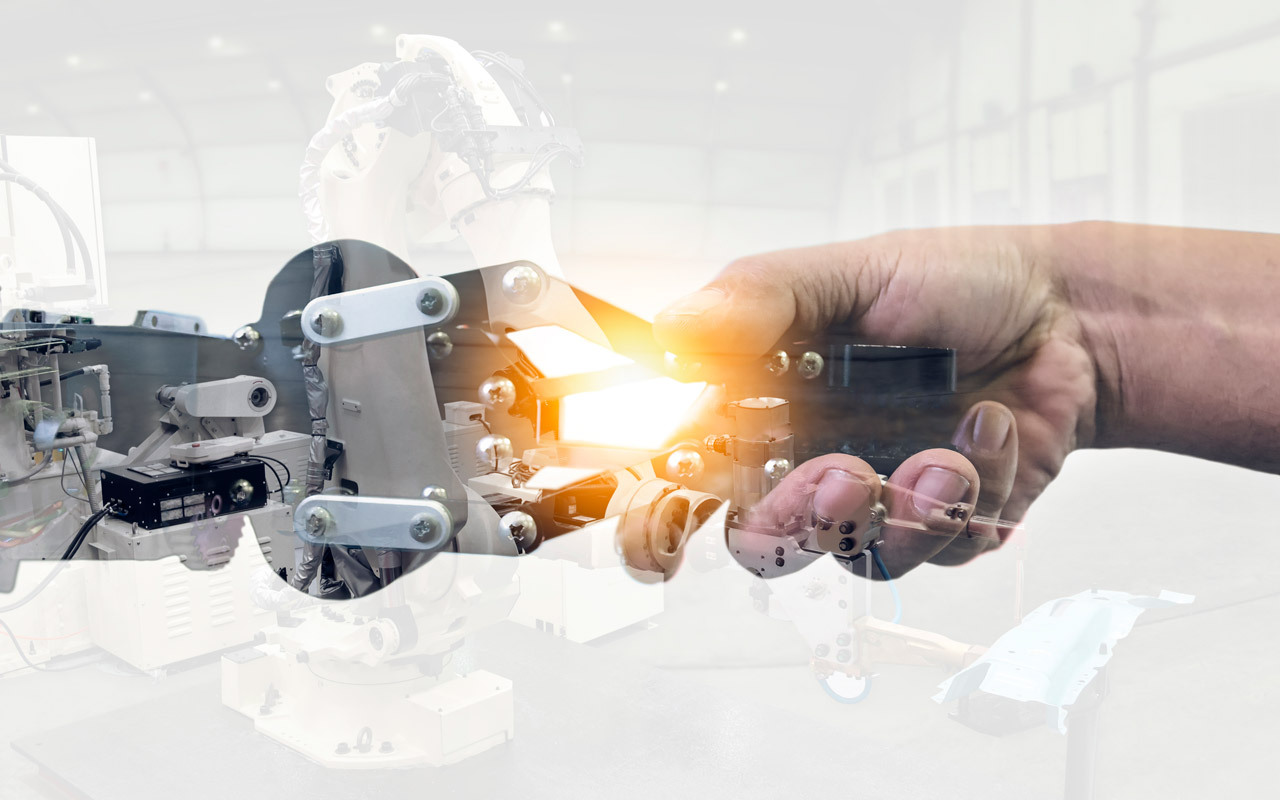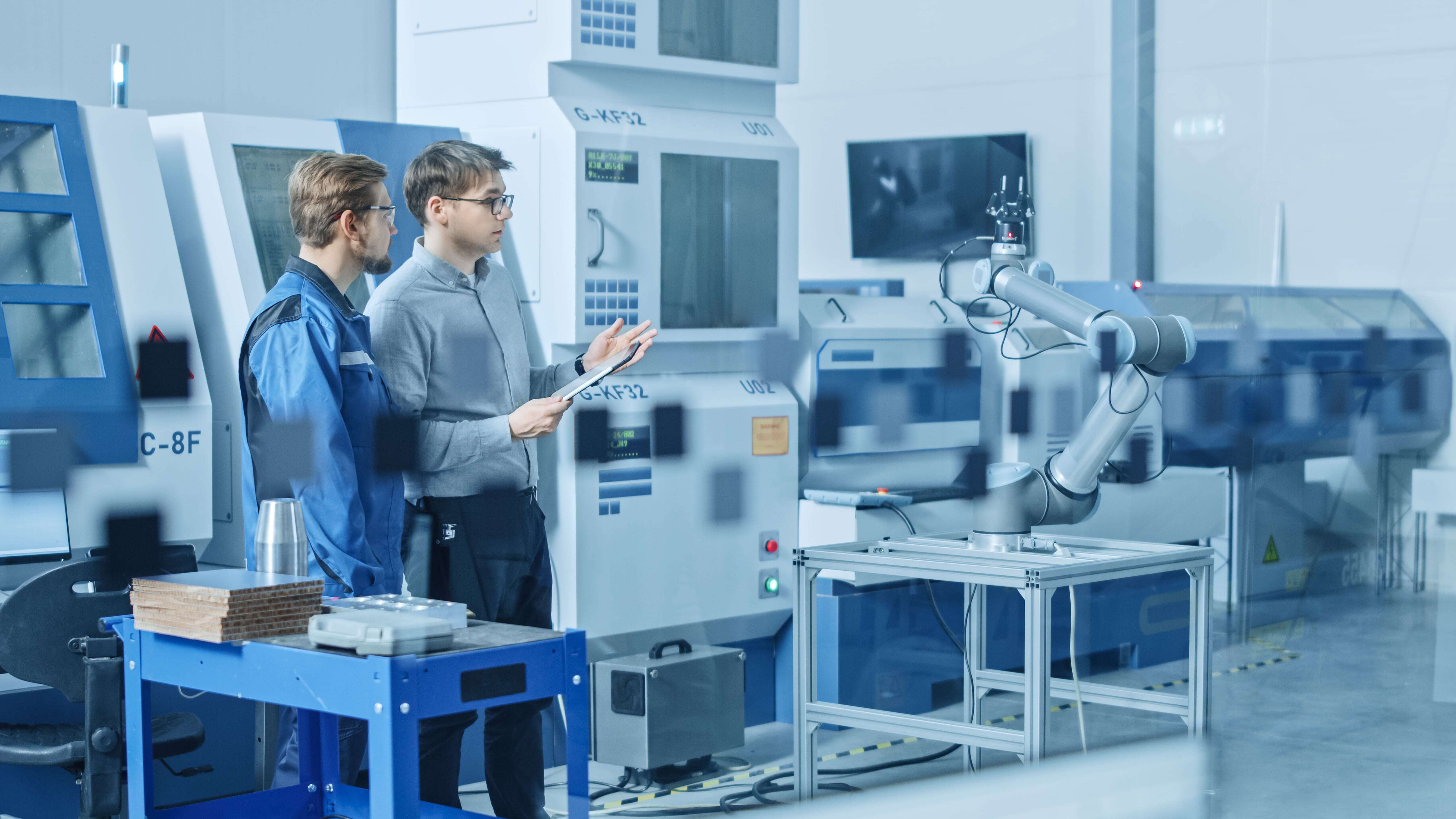19/10/2022
Digital twins: Deriving predictions for production with the help of computer models

It started with a few lines on the screen, but today almost all aspects of a product, information, behaviors, and simulations can be digitally mapped – a digital twin of the product is created. This digital twin makes it possible to virtually test, use and realistically simulate the product. This can be explained using the example of an everyday object: The digital twin of a smartphone is no longer a mere 3D data set as well as the software emulation of its functions. With the digital twin, it is possible to drop the phone to the floor in a virtual simulation and view the damages that occur. It is possible to model the reception and transmission of the cell phone and thus analyze whether it will reach the desired range. This concept can also be used for industrial applications, for example in manufacturing. The further development of the digital twin is the digital twin of manufacturing. This is used not only to design and place the necessary facilities and to plan the operations that form the production process. The digital twin of manufacturing ultimately forms the basis for controlling this manufacturing.
Downstream processes use (not only) the 3D model
For planning the production and developing the operating equipment, the 3D model of the product is of course the most important basis. Based on the CAD data of the product, its assemblies and individual parts, the sequence of manufacturing steps is defined, machines are determined to perform these steps and NC programs are developed to control these machines. At the same time, quality assurance creates measurement protocols and programs to reliably monitor the relevant properties, and equipment design develops holders, grippers, carriers and all other tools required in this manufacturing sequence. This further use of geometric models is already a daily routine in many companies today. But 3D CAD models today contain much more information than just geometry, for example material data, centers of gravity and weights. This metadata is of interest to logistics, for example, where suitable packaging can be developed, and transport simulations performed during the design phase. Among other things, this makes it possible to determine how many packages can be stacked on top of each other on a pallet.
Not only simulate geometry, but also behavior
Ever-increasing electronics and software controls in products result in more and more data being generated. This data offers great potential and used correctly, is a real treasure for companies. However, it is often stored in separate data silos, so that software developers, for example, do not have access to the CAD data of the plant. Modern development environments solve the silo problem by aggregating and combining all product data from all sources. This creates a comprehensive and integrated digital representation of the product - the digital twin. This integration allows, for example, the control system to be digitally simulated and the control programs to run on this simulated environment. In combination with the 3D model of the product, this process can be visualized and analyzed on the digital model. Experts call this "software-in-the-loop". The next step towards reality is the connection of the real control terminal to the computer and thus the control of the virtual product by the original control: "hardware-in-the-loop".
The factory in the computer
One example is the ability to put a complete virtual manufacturing plant into operation. Machine control systems can compute how long a machining operation will take, so that material flows, and cycles can also be realistically mapped in this simulation. In this way, it is possible to analyze how production is running, where the material flow is jammed, and which units could become bottlenecks – long before the first unit is installed, and manufacturing is set up. The production planners can analyze and make corrections at the “green table” until an optimal process is guaranteed. As a result, the digital twin can save immense sums of money in advance. Because changes to a fully set-up production line can cause huge expenses. Sometimes, optimizations can no longer be carried out because the machines and their foundations are already in place - which in turn can have fatal consequences for the efficiency of future production. Thanks to planning on the digital twin, such mistakes do not happen. Nevertheless, this virtual factory does not become superfluous with the implementation in reality but can run in parallel – now fed with the real data of the production. On the one hand, this enables precise monitoring of ongoing production, and on the other, deviations between the real and virtual plant show where unwanted deviations from the target state occur. In this way, it is possible to react at an early stage when problems start to occur. Among other things, the system can calculate how the wear of the drilling and milling tools affects the production quality and how quickly the tools wear out. Based on this data, replacement tools can then be ordered and applied in good time before quality is affected. Quality is assured, efficiency is increased, and downtime is avoided.
The digital twin: A playground for production planning
Of course, such a digital twin is ideal for testing changes to the production line. From service work to switching to a follow-up project – the ideas can be tested on the digital model without disrupting real production. In this way, the digital twin provides the opportunity to make informed decisions that would otherwise be based on assumptions. Modifications and service can be planned and executed precisely, unplanned downtime reduced, and costs saved.


